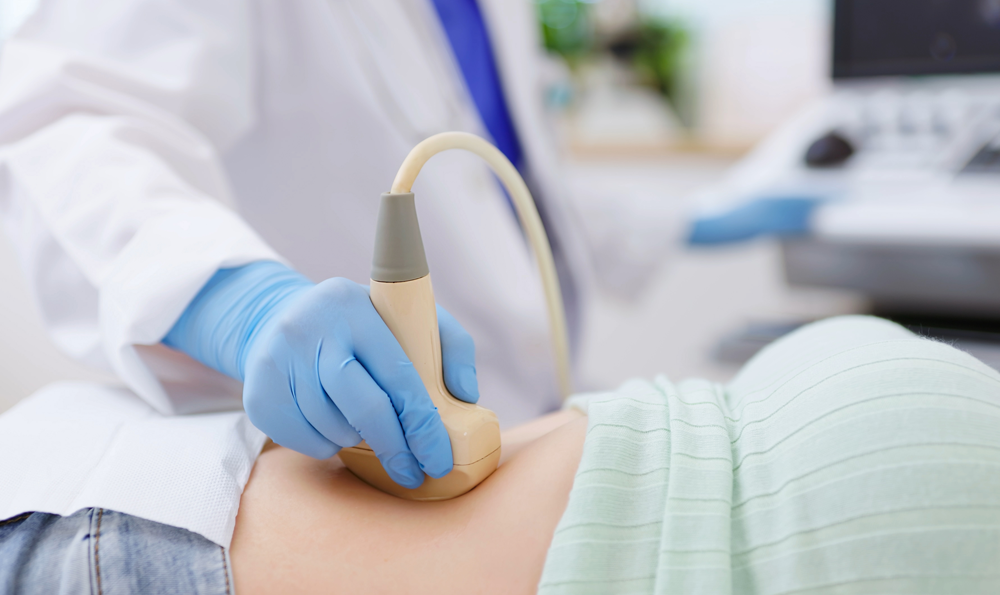Uterine fibroids are one of the most common benign gynecologic conditions that can affect up to 70% of women during the reproductive years. For most, these non-cancerous growths in the uterus never become a problem. But for others, they can bring on a host of complications that impact health and fertility.
Sean Calhoun, DO, Atlantic Health System interventional radiologist, says, “Uterine fibroids are benign tumors that develop in the uterus and can cause unnecessary bleeding and other debilitating symptoms.”
The signs and symptoms of uterine fibroids
If you have asymptomatic uterine fibroids, Dr. Calhoun recommends monitoring their growth with ultrasound. But if you’re experiencing symptoms, there are multiple treatment options available. Common symptoms include:
- Heavy and painful periods
- Abnormal bleeding between periods
- Pelvic pain, bloating, and pressure in the lower abdomen
- Frequent urination
- Painful intercourse
- Low back pain
- Infertility and miscarriage
Considering your treatment options
Mason Hui, DO, a minimally invasive gynecologic surgeon at Atlantic Health, explains that treatment options vary based on a woman’s age, preferences, reproductive goals, overall health, and severity of fibroids and symptoms.
“I see women with fibroids of various shapes and sizes and depending on the number of fibroids present and the goals of the patient, I offer different surgical treatment modalities,” says Dr Hui.
Some fibroids can grow to 20 centimeters in size, and a minimally invasive procedure can bring significant and immediate relief of their symptoms. Here are a few of the treatment options available:
1. Uterine fibroid embolization (UFE)
Dr. Calhoun performs a minimally invasive procedure known as uterine fibroid embolization, which shrinks fibroids, improves symptoms, and preserves the uterus to avoid hysterectomy. Through a needle in the groin, he guides a catheter under X-ray guidance into the uterine arteries to block the blood supply to the fibroids. Following an overnight hospital stay, recovery takes about a week or two.
2. Laparoscopic radiofrequency ablation (The Acessa Procedure)
Dr. Hui offers a novel, uterine-sparing minimally invasive treatment for uterine fibroids called The Acessa Procedure. Using a special radiofrequency device and a few small incisions, he applies radiofrequency energy to shrink the fibroids and preserve the uterus. Patients go home the same day, and recovery takes about three to five days. Currently there is insufficient data on the safety and effectiveness of this procedure for women who are considering future pregnancy.
3. Hysteroscopic or robotic-assisted laparoscopic myomectomy
For women with fibroids who want to maintain fertility, Dr. Hui explains that a myomectomy is a successful way to surgically remove fibroids from the uterus. The fibroids can be accessed through the vagina or a few small abdominal incisions. Recovery time can vary from two to four weeks. Despite removing the fibroids from the uterus, there is still a risk of them potentially growing back.
4. Hysterectomy
A hysterectomy involves the complete removal of the uterus along with the fibroids. According to Dr. Hui, it is the definitive option of removing fibroids; however, it is only recommended for women who are not planning future pregnancies. The procedure is done using minimally invasive robotics, and recovery takes about six to eight weeks.
“Some patients need a combination of procedures,” says Dr Calhoun, who explains that conservative, nonsurgical options such as hormonal therapy and intrauterine devices are often ineffective in controlling symptoms, and treatment options are best coordinated between your gynecologist and an interventional radiologist. Very few patients are not candidates for UFE.
“If a woman comes to us and is not a candidate for embolization, we engage with a gynecologic surgeon like Dr. Hui to discuss other options,” Dr. Calhoun says. “This shared decision-making helps doctors and patients find the best solution for long-term success. Most women who undergo the UFE procedure experience such quick relief they say at their follow-up visit they wish they’d done it sooner.”
Dr Hui adds, “Most women are not aware of the various modalities to treat fibroids. Traditionally it was always recommended to have a hysterectomy, but with the latest cutting-edge technology, it is important for women to know their treatment options so they can make an informed decision on the plan of care that is best suited for them.”












